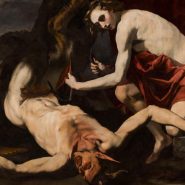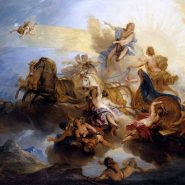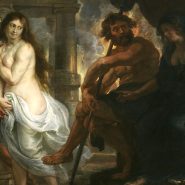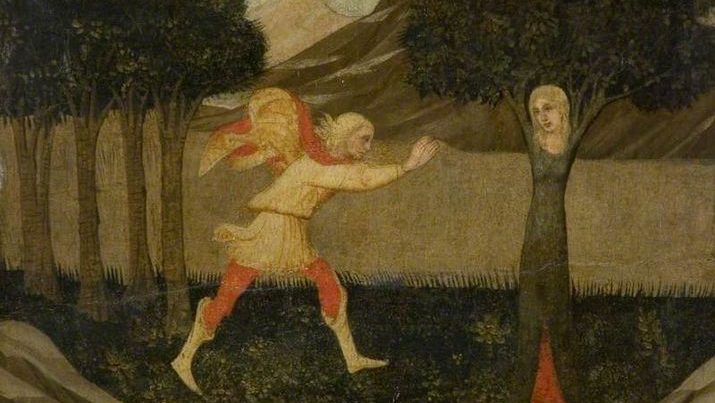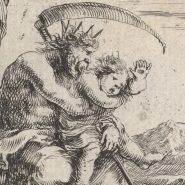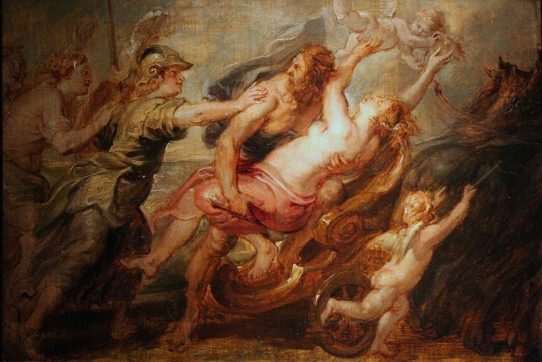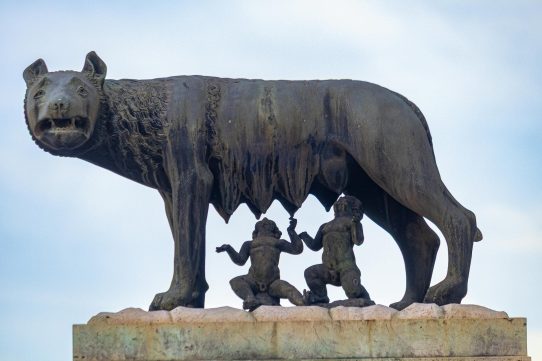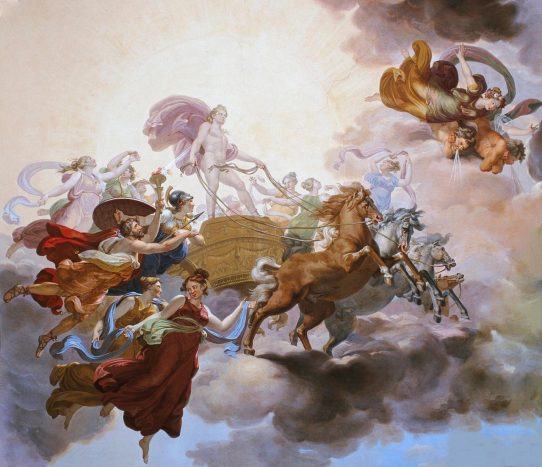Overview
Daphne is among the most moving figures in Roman mythology — a nymph whose transformation into a laurel tree became the ultimate symbol of purity, freedom, and divine restraint.
Her story, drawn from Ovid’s Metamorphoses, tells of pursuit and prayer, of love unreturned yet immortalized. Through Daphne’s flight and Apollo’s desire, the Romans explored the tension between passion and virtue, between the impulse of the heart and the discipline of the spirit.
Characters and Setting
Daphne was the daughter of Peneus, the river god of Thessaly, and one of the nymphs who served Diana. Her beauty reflected the calm purity of forest and stream — radiant yet untouched.
Apollo, god of light, music, and prophecy, saw her while still basking in triumph over the serpent Python. Pride swelled within him, and in jest, he mocked Cupid’s small bow, claiming that only the weapons of gods could conquer hearts.
Angered, Cupid shot two arrows: one of gold, to inflame Apollo with love; and one of lead, to turn Daphne’s heart toward flight. From that divine opposition, the myth unfolds — the pursuit of desire and the birth of restraint.
The Chase
Apollo approached Daphne with words of admiration, promising protection, wealth, and eternal fame. But she saw in him not safety but pursuit. Terrified, she turned and fled through the forest. The god followed, his golden hair streaming, his lyre cast aside. Their chase wound through valleys and rivers, the air alive with his pleas and her desperate prayer.
Daphne’s flight was not born of disdain, but of a deeper wish — to remain her own, untouched by any power, divine or mortal. She longed for a life devoted to purity, to the hunt, and to the freedom of the woods.
The Prayer of Transformation
As Apollo’s steps drew near and his breath brushed her hair, Daphne cried out to her father, “Help me, Peneus — change my form, and free me from this beauty that brings me ruin!” The river god heard. Her feet grew heavy and rooted to the ground. Her skin hardened to bark, her arms stretched into branches, and her hair became leaves that shimmered in the sunlight.
Apollo reached for her just as the last trace of flesh turned to wood. He placed his hand upon the trunk, and still he felt her heart trembling beneath the bark. The god’s love did not fade, but his passion became reverence. In that moment, pursuit yielded to worship.
The Laurel Crown
Apollo, struck with sorrow and wonder, declared the tree sacred. He vowed that her leaves would never wither and would crown the heads of poets, victors, and emperors. The laurel thus became Rome’s emblem of triumph — not of conquest over others, but of mastery over oneself.
Each laurel wreath woven in later centuries would carry the echo of Daphne’s choice: freedom through transformation, and beauty through virtue. In honoring her, Apollo learned the lesson that divine power finds its nobility in restraint.
Symbolism and Interpretation
For the Romans, Daphne’s metamorphosis was far more than a tale of flight. It was a moral and philosophical parable. Her transformation from flesh to tree symbolized the passage from passion to peace, from desire to discipline. To flee from love was, in her case, to preserve identity. The laurel represented purity rewarded, the victory of reason over impulse.
Apollo’s acceptance marked the birth of a new harmony — the reconciliation of pursuit and piety. Where Greek myth had seen tragedy, Roman thought found virtue: the body may change, but the spirit endures, untouched and eternal.
Cultural Legacy
Daphne’s story became one of Rome’s favorite moral allegories. Poets saw in her the image of the soul escaping temptation; sculptors carved her transformation into marble as the very image of living faith. The most famous of these, Bernini’s seventeenth-century masterpiece, captures the moment bark spreads across skin and fingers bloom into leaves — the instant when motion becomes stillness and mortal form turns divine.
In Roman culture, the laurel wreath remained an enduring tribute not only to Apollo’s grace but to Daphne’s will. Her name, meaning “laurel,” passed into language itself, a symbol of triumph earned through virtue.
Gods involved: Apollo, Cupid, Peneus
Based on classical sources in the public domain, including Ovid’s Metamorphoses and related translations available via Project Gutenberg and Wikisource.
